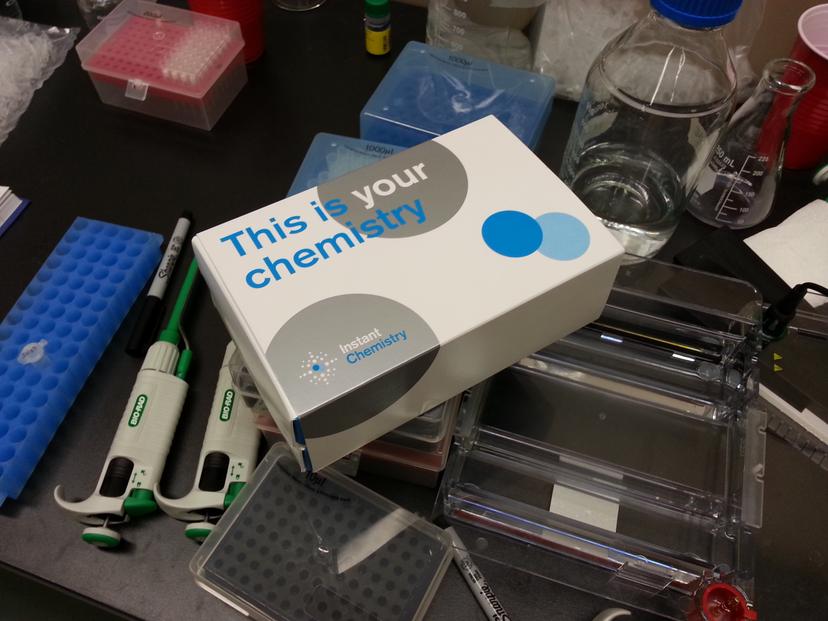My Lab Essentials Special: Stack the Dating Deck in Your Favor with Some Instant Chemistry
SelectScience® spoke to a scientist and entrepreneur who believes the secret to love lies in our genes
10 Feb 2016

SelectScience® spoke to a scientist and entrepreneur who believes the secret to love lies in our genes
When evaluating your compatibility with a partner, you might think about aspirations in life, whether they have a good sense of humor or share any of your interests. However, in honor of Valentine’s Day, SelectScience spoke to Dr Sara Seabrooke, co-founder and Chief Science Officer at Instant Chemistry, a company that has some uncommon suggestions to test if you and your partner are meant to be.
“The Instant Chemistry test is designed to help single people find a meaningful relationship faster by not wasting time meeting people they don’t actually feel connected to,” explained Dr Seabrooke. After gaining her PhD in genetics and neuroscience, she became intrigued about the effect our genes can have on our behavior and potentially, our love life. She co-founded Instant Chemistry as a way to narrow the field if you’re single, and, if you’re already in a relationship, “to learn more about yourself and your partner and have a greater understanding of the strengths and weaknesses in your relationship.”
The Instant Chemistry test starts with a simple saliva sample. “The DNA goes through a number of processing steps before we are able to distinguish what variant of the gene someone carries” Dr Seabrooke said, and just like different gene variants can cause different eye colors, the variants of the genes Dr Seabrooke is looking for can affect our personality and are interpreted using “existing academic research”.
The genes Dr Seabrooke is interested in are focused about the histocompatibility complex, MHC/HLA, and serotonin uptake transporter, 5-HTTLPR. “Research on HLA and human relationships has been studied since its discovery back in 1995, as has the role of the serotonin uptake transport mechanism,” revealed Dr Seabrooke. “A test for HLA, measures physical chemistry; serotonin uptake is used to evaluate emotional chemistry and three other genes, DRD4, OXTR and COMT are used to measure neurocompatibility”; and a test devised by Instant Chemistry’s resident clinical psychologist forms the last part of the process, measuring psychological compatibility.
The old and the new
Once Dr Seabrooke has compared your results of the various tests to the results of your partner, a percentage is generated. We find “HLA, the serotonin update transporter and DRD4” tend to play to biggest part in compatibility, so they are weighted more strongly in the end results. In the end though, despite the high tech methodology and academic evidence for genetic compatibility testing, Instant Chemistry’s recommendation comes down to a very old adage – opposites attract!
Here are Dr Seabrooke’s lab essentials – the instruments that make Instant Chemistry possible:
- The CFX Connect™ Real-Time PCR Detection System from Bio-Rad
- Gel Doc™ EZ System (170-8270) from Bio-Rad
- Bio-Rad’s PowerPac™ Basic Power Supply (164–5050)
- A Centrifuge 5415 D from Eppendorf
- A QIAGEN Multiplex PCR Plus Kit from QIAGEN
- An iTaq™ Universal SYBR® Green One-Step Kit from Bio-Rad
Find out more information about genetic testing on our dedicated page, or learn more about Instant Chemistry.
